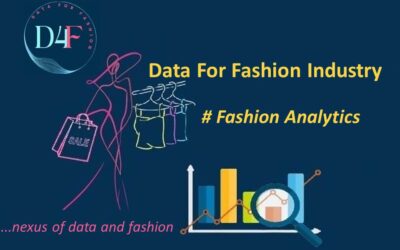Fashion analytics refers to the use of data analysis and technology to gain insights into various aspects of the fashion industry. It includes gathering and evaluating data concerning consumer behavior, market trends, product performance, supply chain, pricing etc.
In 2020, online stores boomed worldwide, and this trend is only getting bigger. Today, it’s crucial for business owners to understand their company’s data – it’s not just a luxury; it’s a must.
Key Areas in Fashion Analytics:
- Consumer Driven Marketing
- Product Recommendation
- Digital and Web Analytics
- Supply Chain Analytics
- Integrated Demand Forecasting
- Pricing Analytics
- Store Localization, Clustering, and In-store Optimization
- Artificial Intelligence for Predicting Fashion Trends
Navigating Analytics in Today’s Fashion Retail Landscape:
- Retailers face a plethora of options in the contemporary business landscape.
- The intersection of style, creativity, and analytics prompts a strategic approach to investments in the fashion industry.
- Analyzing market maturity and competition is essential for targeted analytics investments.
- Given the mature and competitive market, acquiring proven analytical applications becomes a priority.
- Start with established applications to ensure competitiveness and later explore innovative analytics areas.
- Aggressive adoption of analytics provides a competitive edge for successful fashion brands.
- Analytics plays a crucial role in driving innovation and disrupting traditional business models.
- Established organizations may face higher costs of change, while startups benefit from rapid innovation.
- Failure to invest in technology and innovation puts existing retailers at risk of losing market share in a shifting business model.
Leveraging Analytics for Competitive Edge in Fashion Retail:
- Customer Engagement and Targeted Marketing:
- Close relationships with customers based on deep understanding.
- Targeted advertising, promotions, and product offers to motivate purchases.
- Digital Analytics for Enhanced Consumer Experience:
- Improves consumer experience and conversion rates across all channels.
- Planning Optimization:
- Assists in product allocation, demand forecasting, and customer care.
- Optimizes warehouse operations and identifies optimal locations for new facilities.
- Inventory Management:
- Minimizes overstock or understock through intelligent technologies.
- Reduces lead times for introducing new products to the market.
- Environmental Sustainability:
- Addresses consumer consciousness about environmental issues.
- Utilizes analytics for better sourcing, raw material consumption, trend prediction, and consumer understanding.
- Impact on Fashion Industry’s Carbon Emissions and Wastewater:
- Fashion industry contributes to 10% of global carbon emissions and nearly 20% of wastewater.
- Analytics supports the entire value chain, promoting sustainable growth for both consumers and the planet.

